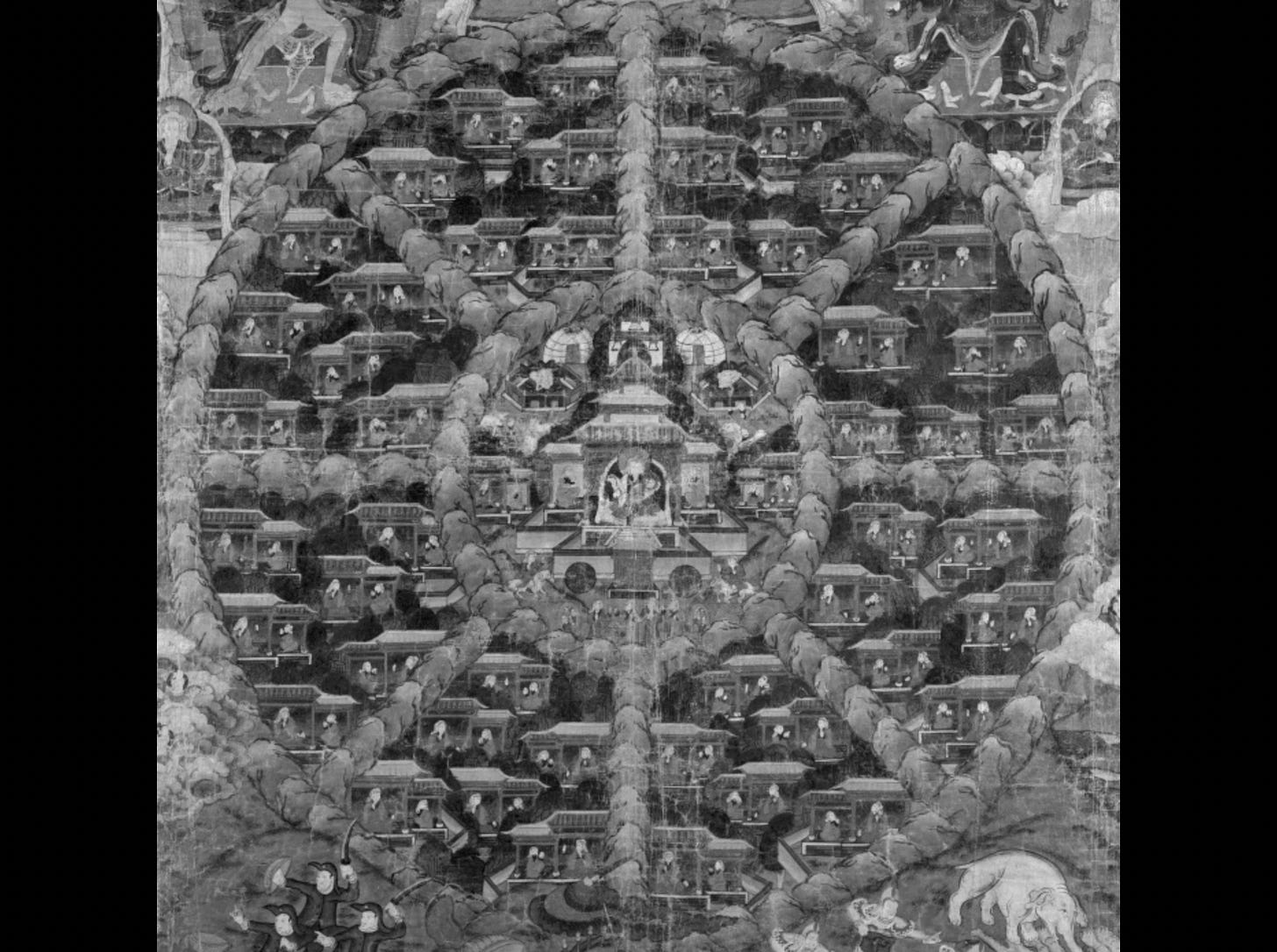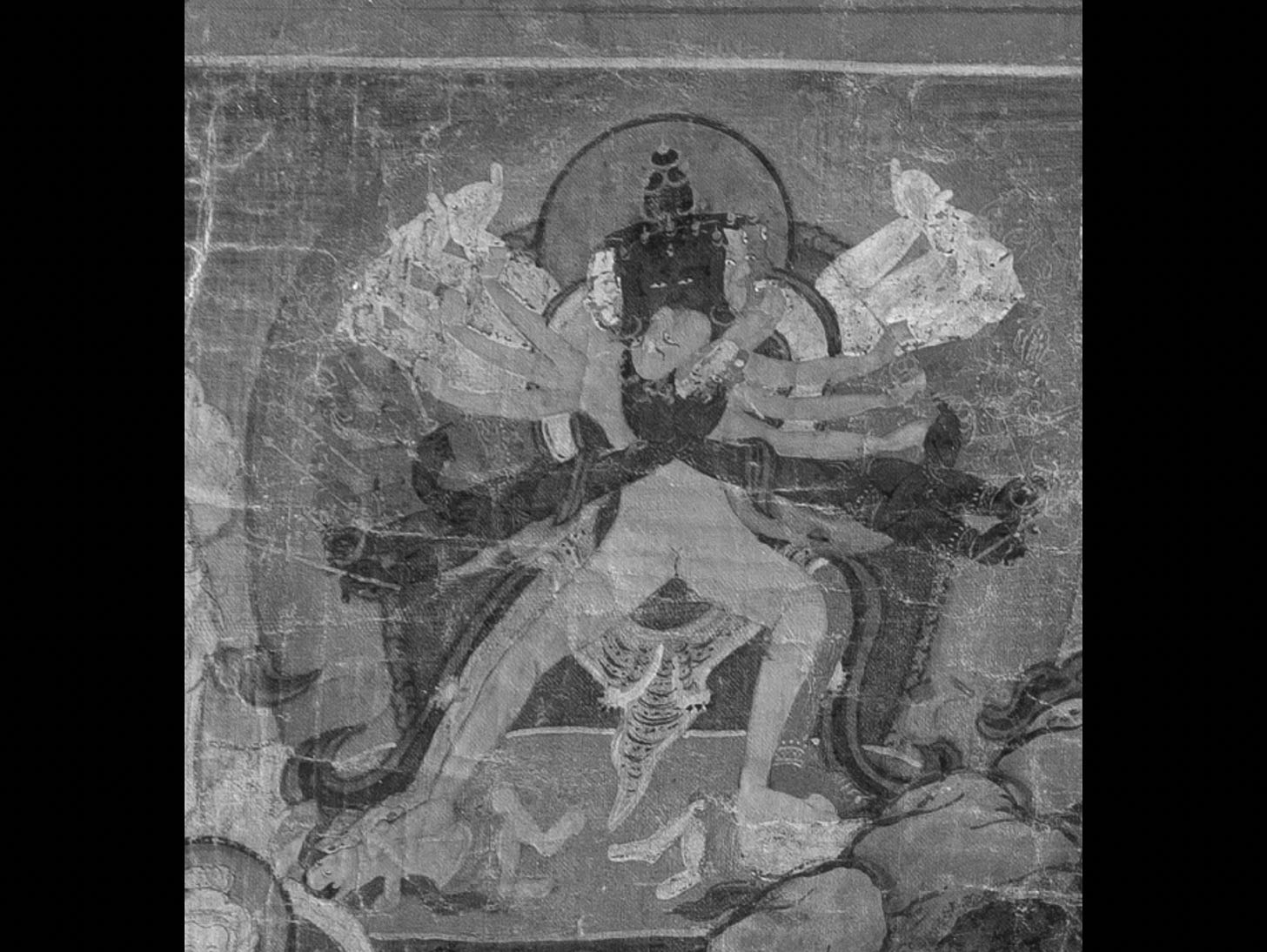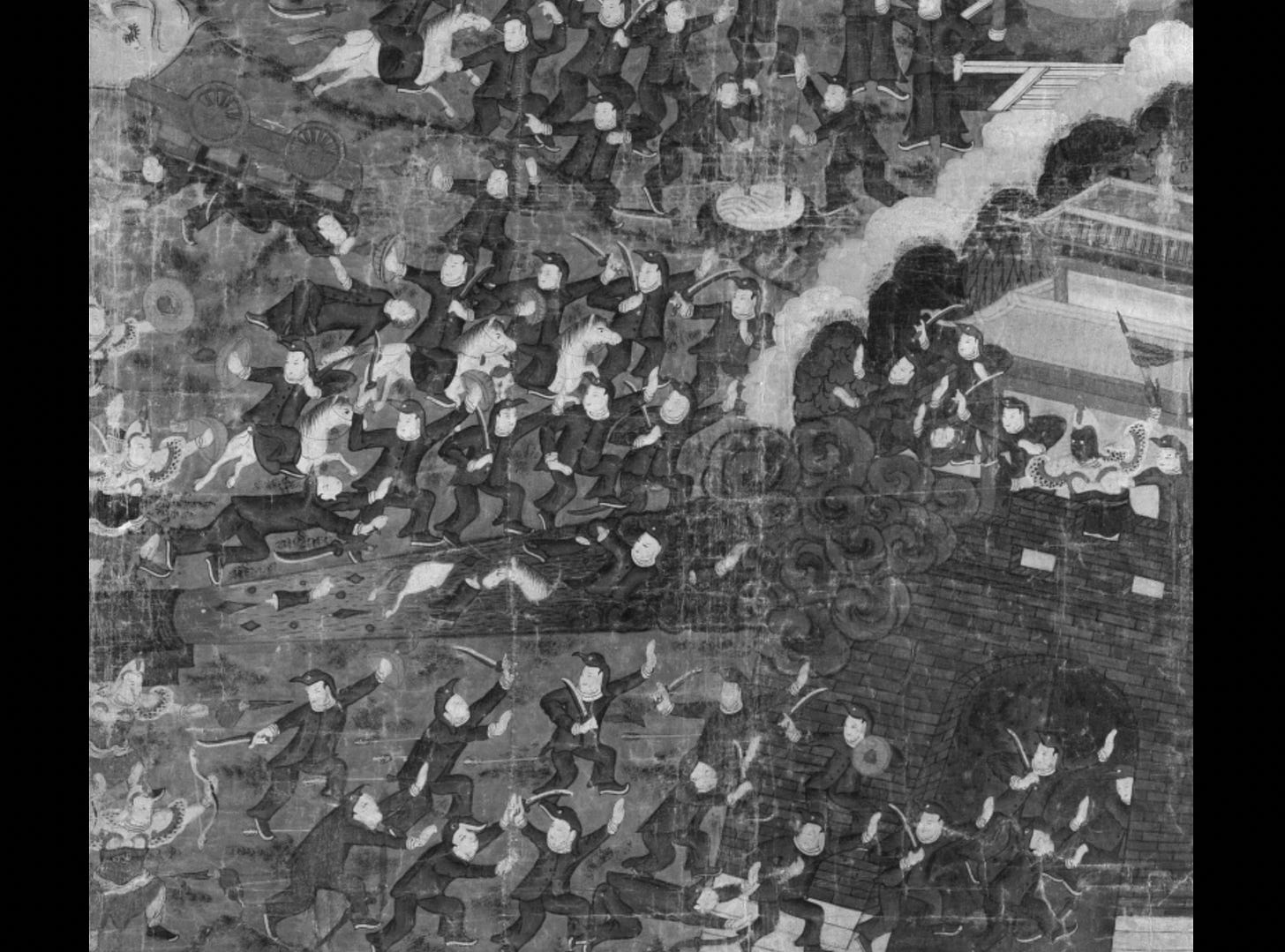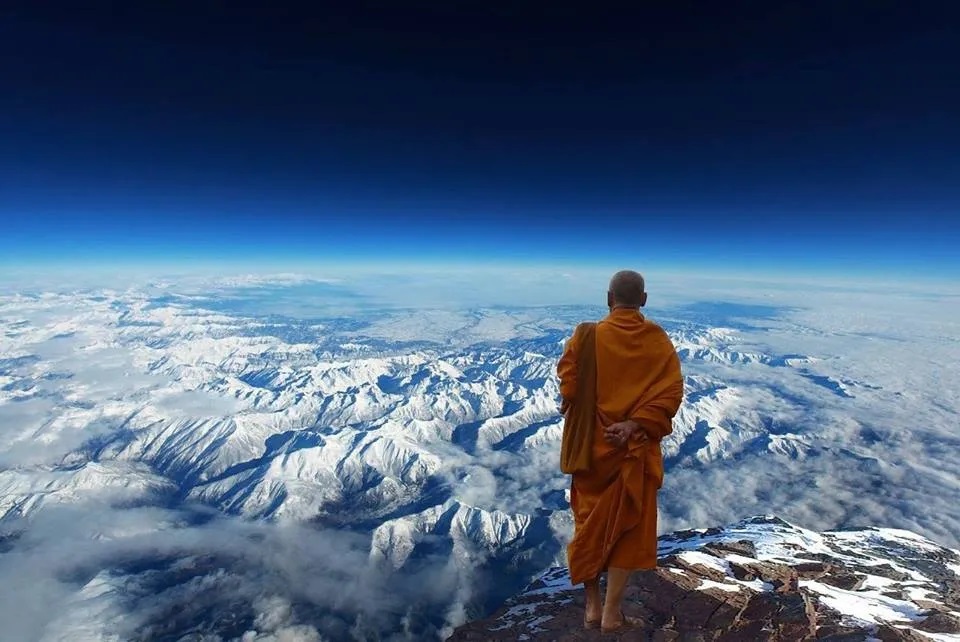The Legend of Shambhala:
A Hidden Land That May Exist Within Our Own
by Arjun Walia
At the end of last month, I wrote an article about the possibility of extra dimensional life and worlds that may exist within our own. In that article I mention the legend of Shambhala, but didn’t expand upon on it, which is what I’m going to do in this article.
In my previous article, I start by explaining that the possibility of multiple universes and multiple dimensions has been written about and discussed in almost every culture we know about. The lore spans across all centuries throughout human existence, and the trend hasn’t stopped today, especially when one dives deep into the realm of quantum mechanics.
Where is it? Who Lives There?
Shambhala is said to be a physical place as much as it is spiritual. The concept of this ‘hidden’ land comes from Buddhist philosophy. Apparently it even has a geographical location somewhere deep within or around the Himalayas, perhaps closer to Tibet. It came to be known as a Buddhist ‘pure land’ that exists within our own but in another dimension, and is said to be inhabited by very advanced and ‘enlightened’ beings. Its capital city is called Kalapa, which is located at the centre of Shambhala.
According to the Dalai Lama at a speech he gave in 1985 during the Kalachakra Initiations:
“Although those with special affiliation may actually be able to go there through their karmic connection, nevertheless it is not a physical place that we can actually find. We can only say that it is a pure land, a pure land in the human realm. And unless one has the merit and the actual karmic association, one cannot actually arrive there.”
According to the The Theosophical Society,
“Shambhala, however, although no erudite Orientalist has yet succeeded in locating it geographically, is an actual land or district, the seat of the greatest brotherhood of spiritual adepts and their chiefs on earth today. From Shambhala, at certain times in the history of the world, or more accurately of our own fifth root-race, come forth the messengers or envoys of spiritual and intellectual work among men.”
Edwin Bernbaum, Ph.D., is a lecturer, author, and scholar of comparative religion and mythology. He has worked for many years with a focus on Buddhism and Hinduism and applications of myth to various areas of modern life, ranging from science to business, and government.
According to him, Shambhala is round, but depicted as an eight-petalled lotus blossom, which is a symbol of the heart Chakra. He also makes it clear in his book, The Way To Shambhala, that the way is not clear.
His work provides multiple records of Shambhala from multiple centuries and kingdoms that reigned across all parts of Asia throughout history.
There are many historical records, writings, and works of art depicting Shambhala. Bernbaum has accomplished a major feat in producing this informative book. He has brought considerable clarity to the issue of Shambhala and Buddhist eschatology, combining scholarly research with extensive reporting from living informants, including a number of distinguished lamas.
This is something also expressed by multiple researchers in the field,
“The tale of the kingdom of Shambhala somewhere to the north of Tibet, where the Kālacakra teachings are preserved and taught, have enjoyed widespread popularity in Tibet and the Mongolian regions (Kollmar-Paulenz 1992–1993). In Tibet, the earliest works (apart from the Kālacakratantra and its commentaries) that refer to or explicitly deal with Shambhala date back to the thirteenth and fourteenth centuries. During this period, the first guidebooks to the kingdom were also produced. Some of the best-known Tibetan historical chronicles deal with the kingdom.”
Here is a description from the Tibetan Buddhist Encyclopedia, which also correlates with various other sources that have explored this topic,
“Somewhere far in the North, goes a Tibetan legend, is the kingdom of Shambhala, shielded from the outside world by mountain peaks as high as the heavens and sharp as the teeth of a tiger. This land has the shape of a giant lotus with eight petals. Those fortunate enough to reach this wonderful place are awed by its beautiful and plentiful lakes, ponds, meadows, forests, and groves. In the middle of Shambhala stands its capital, Kalapa, whose palaces are all made of pure gold, silver, turquoise, coral, pearl, emerald, moon crystal, and other precious stones. Instead of ceilings, these palaces have special circular magnifying crystal spheres through which people can gaze at the gods, the sun, the moon, and the stars, so close that they appear within reach.
Window screens are made of sandalwood, and the thrones are all of pure gold. South of Kalapa the seeker will find a special pleasure grove, and in the west one catches a glimpse of the beautiful lake where humans and gods enjoy boat rides together.
The people of Shambhala never become sick or old, and they are blessed with handsome and beautiful bodies. The laws of the land are mild and gentle, and beatings along with imprisonments are totally unknown. Last but not least, Shambhala inhabitants never go hungry. All in all, residents of the kingdom are good, virtuous, and intelligent, and capable of reaching Nirvana in their lifetime. Shambhala’s priests are very faithful and humble. They reject material possessions and go barefoot and bareheaded, dressed only in white robes.”
Michael Wood, a former BBC journalist, describes it as a lost kingdom buried somewhere in the Himalayas, and writes about how the name Shambhala first appears in a text known as the Kalachakra tantra – or Wheel of Time teaching. This Kalachakra doctrine belongs to the highest level of Buddhist Mahayana teaching.
He writes that in Shambhala, the people live in peace and harmony, and are faithful to the principles of Buddhism. In this land, war, grief and sorrow were completely unknown.
A Prophecy
According to Michael, one commentator on the Kalachakra tantra describes it as follows:
“The land of Shambhala lies in a valley. It is only approachable through a ring of snow peaks like the petals of a lotus … At the centre is a nine-storey crystal mountain which stands over a sacred lake, and a palace adorned with lapis, coral, gems and pearls. Shambala is a kingdom where humanity’s wisdom is spared from the destructions and corruptions of time and history, ready to save the world in its hour of need.
The prophecy of Shambala states that each of its 32 kings will rule for 100 years. As their reigns pass, conditions in the outside world will deteriorate. Men will become obsessed with war and pursue power for its own sake and materialism will triumph over all spiritual life. Eventually an evil tyrant will emerge to oppress the earth in a despotic reign of terror. But just when the world seems on the brink of total downfall and destruction, the mists will lift to reveal the icy mountains of Shambala. Then the 32nd king of Shambala, Rudra Cakrin, will lead a mighty army against the tyrant and his supporters and in a last great battle, they will be destroyed and peace restored.”
Nicholas Roerich (1874-1947), a well known Russian explorer, also writes of Shambhala being located in the North. He travelled through Mongolia and China to the borders of Tibet, and says that during a conversation with a Lama he was told that the great “Shabmhala is far beyond the ocean. It is the mighty heavenly domain. It has nothing to do with our Earth. Only in some places, in the Far North, can you discern the resplendent rays of Shambhala.” He claimed the entrance was deep in the high mountains. The Lama also told Roerich that the king of Shambhala is:
“Ever vigilant in the cause of mankind: he sees all the events of earth in his ‘magic mirror’ and the might of his thought penetrates into far-off lands. Uncountable are the inhabitants of Shambhala. Numerous are the splendid new forces and achievements which are being prepared there for humanity.”
– Nicholas Roerich, Shambhala: In search of the new era, Rochester, VE: Inner Traditions, 1990
A “Buddhist Armageddon”
In some Buddhist prophecies the equivalent of an ‘Armageddon’ is also called Shambhala, in which good triumphs over evil. Through Shambhala, the planet is restored rather than destroyed so people can pursue enlightenment after this occurs. Perhaps this is what’s being prepared for humanity in Shambhala, as Roerich mentioned above.
The highest class of Buddhist tantra, anuttarayoga, teaches meditation methods that parallel the process of death and rebirth in order to access the subtlest level of mind, which apparently naturally manifests at the time of death. Through utilizing this unique level of mind to gain a non-conceptual blissful type of awareness of voidness, practitioners rid their mental faculties forever of unawareness, disturbing emotions, karmic forces, and the tendencies and habits of all of these and more.
In doing this, they stop the forces that cause the cycles of their ordinary deaths and rebirths, and thus attain liberation and enlightenment so that they can best benefit everyone, and perhaps move beyond the cycle of reincarnation into whatever lies after.
These types of teachings in Buddhist philosophy make reference to the cycles that universes periodically undergo, with recurring dissolution, empty periods, evolution, and enduring, similar to what ‘limited beings’ undergo with recurring death, rebirth, and a lifespan. The meditation practices rid the practitioner of being under the control of not only these recurring internal cycles of death and rebirth, but the parallel external cycles of the universe as well.
It’s all connected. What beings go through on the inside is a mirror and a parallel to what the physical world experiences as a collective as well, it seems, according to this doctrine. It gives more meaning to the idea that change comes from within, and that changing oneself on the inside is a key to changing the world we see outside of us.
This is, from what I understand, the basic idea of ‘the end’ in Buddhist philosophy, but it’s really just a new beginning.
It’s a bit hard for me to wrap my head around, but it does correlate with other faiths that seem to preach about the cycles of humanity. These are also found in Vedic and indigenous lore, for example.
Dr. Alexander Berzin, a renowned scholar, translator, and teacher of Tibetan Buddhism explains, in his piece, Kalachakra Does Not Predict an Actual Armageddon,
“The Kalachakra or “Cycles of Time” system of anuttarayoga tantra adds yet further external and internal parallelisms. In order to make the purification process as complete as possible, this system presents a model of external astronomical and astrological cycles, as well as internal breathing and subtle energy cycles, that not only parallel each other, but also parallel its special meditation practices. For the same purpose of inclusiveness, the system also presents a specially designed picture of history, geography, and physiology that similarly parallels this structure, but which, because of its conscious design, differs from the picture drawn in other Buddhist texts. By understanding that all these corresponding macro- and microcosmic structures occur under the influence of individual and collective karma, practitioners undertake analogous Kalachakra meditation in order to purify their mental continuums of that karma and attain liberation and enlightenment. Thus, the ultimate aim of Kalachakra practice is no different from that of the other anuttarayoga tantra systems.
In order to make its presentation of the meditations for overcoming the ignoranceand barbaric disturbing emotions that bring on the karma that needs to be purified, the Kalachakra texts add to the picture it draws of the cycles of history descriptions of false and true messiahs, invasions of Shambhala, apocalyptic battles, and new golden ages. This historical representation draws on features of the politics, events, and popular pan-religious beliefs and concerns of the time and place in which the Kalachakra literature emerged, namely the early tenth century CE in the area between eastern Afghanistan and Kashmir.”
There is a large Shambhala thangka (Tibetan Buddhist painting) preserved at the National Gallery in Prague, Czech Republic. It is allegedly of Tibetan origin and dates to the nineteenth century. The Prague thangka depicts the mythical kingdom of Shambhala and the ‘apocalyptic’ battle that ensues at the ‘end of times’ between the army of Shambhala and the army of the so-called enemies of the dharma. This battle seems to be predicted to happen 2424, but who knows if that interpretation is actually accurate.
The Asian Collections of the National Gallery of Prague purchased it from a private owner, who could not—or would not—provide information about its origins.
From what I understand, as hinted to above, it is prophesied that when the world declines into war, materialism, greed, and all is lost, the king of Shambhala at the time will emerge with an army, vanquish dark forces and usher in a worldwide Golden Age. Perhaps this is the battle that’s depicted in the thangka mentioned above.
Again, I am confused if this depiction represents an actual battle, or simply a battle against the ‘dark forces’ of materialism, greed, and selfishness that reside within humans.
Below are some pictures from the thangka, the first one depicting the capital of Shambhala, as mentioned earlier.
“Kalápa, the capital of Shambhala, is surrounded by yurts; such depictions are rare and imply a Mongolian origin for the thangka. According to Buddhist texts, such as the Description of the Route to Kalápa (see Newman 1996), Kalápa is a splendid palace, a paradise on Earth, where everyone is happy, where people do not know evil, hatred, and ignorance, and where they live until the age of one hundred. Kalápa is said to possess a special spiritual power, which manifests itself by enabling an advanced pilgrim to achieve all the natural and supernatural perfections (siddhi) by paying respect to the holy sovereigns; a less advanced pilgrim receives spiritual guidance, which will assist him in the successful completion of the spiritual journey.”
– Newman, John. 1996. “Itineraries to Shambhala.” In Tibetan Literature: Studies in Genre, edited by José Ignazio Cabezón and Roger R. Jackson, 485–499. Ithaca, NY: Snow Lion Publications.

Below is the myths visual representation, Kālacakra. The deity of the Wheel of Time/ Kālacakra in Sanskrit, is considered the main Shambhala deity by Tibetan Buddhists.
“The practical aspect of rituals in the Kālacakra temples consisted of prayers for rebirth in the kingdom of Shambhala, the advent of the teacher of Buddhist doctrine, and liberation in the fight against enemies of Buddhism, which will occur during the reign of the twenty-fifth king Rigden Dragpo (Tib. Rigs ldan grags po), that is, Raudracakrin. A special type of sacred building—a temple for the Wheel of Time (Tib. dus ‘khor grwa tshang)—was erected in Tibetan monasteries. The rituals taking place within these structures concentrated primarily on astrology and the Shambhala myth. Kālacakra is depicted here embracing his tantric partner Shakti.”
– Bělka, Luboš. 2019. “Shambhala and the Prague Thangka: The Myth’s Visual Representation.” Cross-Currents: East Asian History and Culture Review (e-journal) 31: 257–262.

Below depicts the enemy commander in a palace surrounded by his soldiers in dark blue uniforms; his face is black and his armour is not visible, but his clothes resemble those of Raudracakrin (the king of Shambhala at the time). This is the closing scene, which is related to the scene where Raudracakrin kills the enemy commander with a lance. It is a visual depiction of the victorious struggle between Buddhists and their enemies, which are sometimes depicted as Islamic, which again would be contradictory to what any experts describe as Shambhala and their ways.

Again, these pictures come from a source that’s not known, and over the past couple of hundred years the myths of Shambhala have been, in some cases, politicized, militarized and changed, and may not represent something accurate at all.
When coming across this thangka, the idea that there would be some type of battle, with death, destruction and a holy war between Buddhism and other schools of faith simply did not resonate with other literature I’ve read about Shambhala. It is, apparently, a land that knows nothing of this type of experience. Given this, and coupled with the fact that the source of this thangka is completely unknown, I am very skeptical of its validity/interpretation.
To me, the myth simply represents the cycles of time humanity goes through, and the inner battle we all face to conquer greed, materialism, and parts of the ego that do not serve us. But again, I don’t see it as myth, I see Shambhala as a place where beings reside that have overcome the issues many human beings are still struggling with, so much so that we as a collective are still not aware that they are even an issue.
Dr. Alexander Berzin explains,
“Interfaith dialogue and understanding, rather than misinformed suspicion and mistrust, are needed for fostering world peace. The conferring of a Kalachakra initiation is a Buddhist contribution to this vitally important process and certainly not a recruitment procedure for a Buddhist holy war. It brings people of different faiths and secular beliefs together in a peaceful atmosphere for a reaffirmation of their moral commitment to counter ignorance and prejudice with mutual understanding and respect.”
Followers of this doctrine, and the “pure land” described as Shambhala participating in an actual, physical type of war against other faiths as the artwork referenced above basically depicts, again, just doesn’t make any sense to me. That being said, I thought it was important to include the art work simply because it’s an important part of history that seems to be popular when discussing the legend of Shambhala.
Arjun Walia













